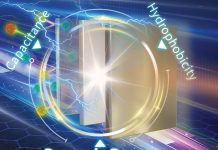
Nuclear power is considered a next-generation energy source, offering high economic efficiency and sustainability.
However, uranium, a crucial component for nuclear power, can significantly harm soil ecosystems and human health.
It is particularly toxic to kidneys, bones, and cells.
Therefore, organizations like the U.S. Environmental Protection Agency and the World Health Organization recommend keeping uranium levels in wastewater below 30 μg/L to protect both environmental and human health.
To address the issue of uranium contamination, the Korea Institute of Civil Engineering and Building Technology (KICT) has made a significant advancement.
They have developed a new material based on nano-technology that can clean up uranium-contaminated wastewater without causing secondary environmental pollution.
Radioactive wastewater is an inevitable by-product of nuclear energy production. Treating this wastewater is complex and costly but essential to reduce its ecological and health risks.
Various methods exist for treating radioactive wastewater, such as chemical precipitation, evaporation, electrochemical techniques, membrane separation, and adsorption/ion exchange.
Chemical precipitation is widely used. This method involves adding chemicals to the wastewater to remove contaminants.
However, this can sometimes lead to secondary pollution. Adsorption processes, on the other hand, are seen as more environmentally friendly, cost-effective, and practical for long-term use.
The KICT research team, led by Dr. Rho, Hojung, has focused on using a material called boron nitride (BN), which is known for its high mechanical strength, resistance to acid, and large surface area.
These properties make BN a potent adsorbent, which means it can effectively capture and hold onto contaminants like uranium.
Despite the known benefits of BN, its effectiveness in real-world scenarios hadn’t been fully tested until now.
The research team conducted extensive tests using hexagonal boron nitride (h-BN) nano-materials to treat actual uranium-contaminated wastewater.
They examined how different conditions, such as exposure time, temperature, uranium concentration, and the presence of other ions and organic matter, affect the adsorption process.
Their findings were promising. The BN material not only captured uranium effectively but could also be reused, making it a sustainable option for long-term wastewater treatment.
The study also used an artificial intelligence-based technique, the Random Forest algorithm, to analyze which factors most affect the BN’s performance.
Interestingly, they found that temperature, the presence of other cations, and organic materials had little impact on its effectiveness.
This groundbreaking research suggests that using BN nano-adsorbents could revolutionize the way we deal with uranium-contaminated wastewater. It offers a safer, more sustainable alternative to traditional methods that rely on chemical agents, which can create additional environmental problems.
Published in the Journal of Hazardous Materials, this study paves the way for more environmentally friendly practices in nuclear waste management, promising to minimize the potential harm to both the environment and human health.
Dr. Rho emphasized that this new method using BN nano-adsorbents is a significant step forward in developing cleaner nuclear waste disposal techniques.



